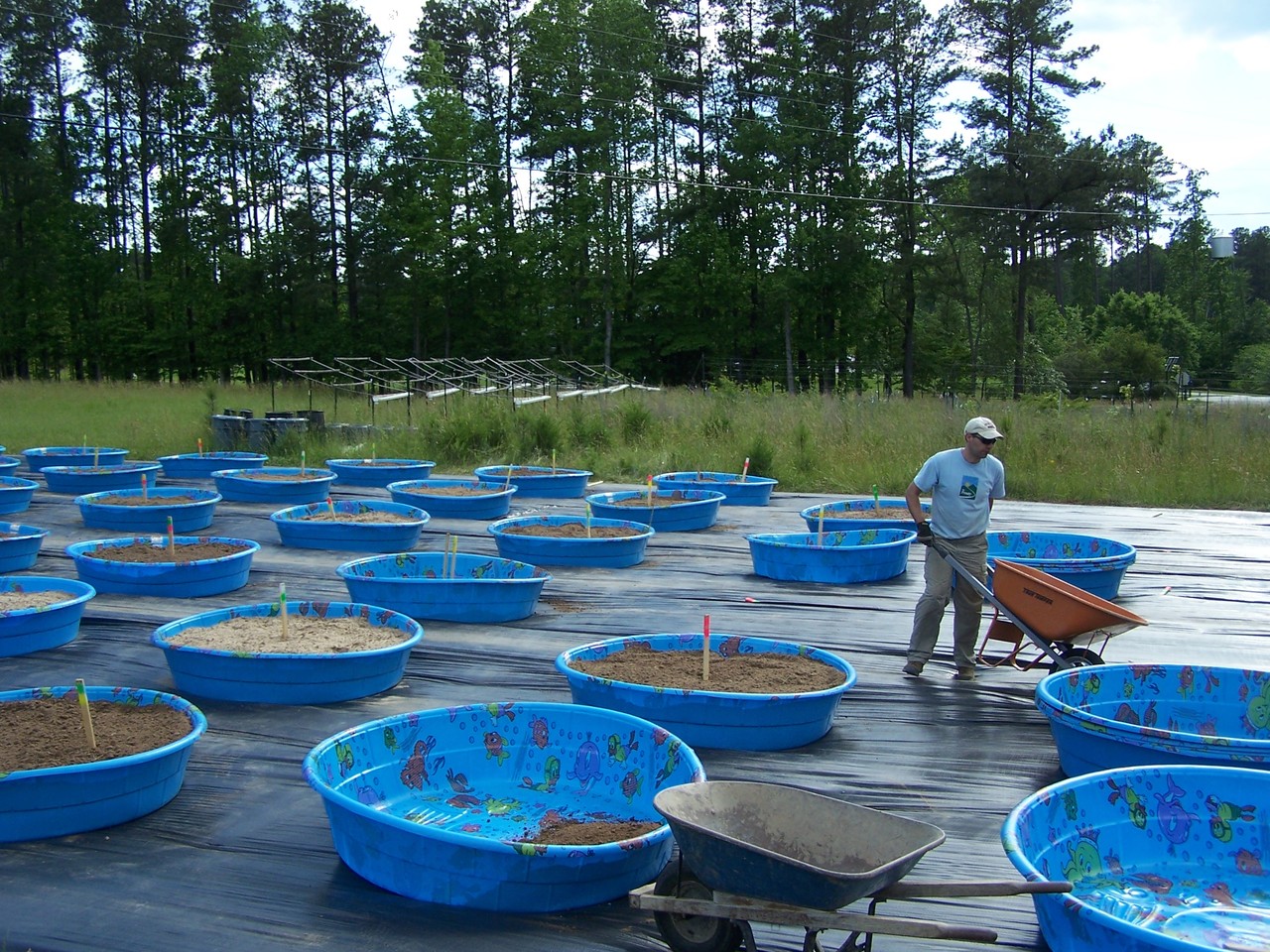Our original paper published in PNAS can be found here .
It all started with a casual conversation with my co-author, Jason Fridley, about an observation about the rate at which abandoned agricultural fields revert to forests – a process known as old-field succession. We had received our PhD’s, and observed old-fields, in different parts of the country (upstate New York and central North Carolina), and as a result had developed very different expectations about how fast this process could occur. In northern latitudes, old-fields typically persist for up to 50 years, while in southern latitudes, they can convert to forest in as rapidly as 10 years. This conversation was one of those exciting moments in my career where I was not even aware of the ways in which my experience had shaped my assumptions, and the ensuing collaboration led first to an observational paper demonstrating that, in fact, there was a latitudinal gradient in the rate of old-field succession and outlining a series of hypotheses to explain this process (Wright and Fridley 2010). In short, we hypothesized that the pattern could be driven directly by climate (generally speaking, biology happens faster when it is hotter) or soil fertility (more fertile soils in formerly glaciated areas tend to increase competition between tree seedlings and herbaceous vegetation), or evolutionary processes could have selected species pools that lead to different rates of succession.


Testing the processes responsible for biogeographical patterns is notoriously difficult through observation alone, so we borrowed from the distributed experimental network model (most notably exemplified by Nutnet). We opted not to manipulate climate experimentally – there were simply too many aspects of it that could have been relevant (mean annual temperature? Annual minima? Growing season precipitation? …), so we established 6 experimental sites ranging from Tall Timbers Timbers Research Station near Tallahassee, Florida in the south to Syracuse University in Syracuse, New York in the north. At each site we artificially created miniature old fields where we experimentally manipulated soil fertility (by using different mixes of sand and topsoil) and herbaceous composition (using typically southern bunchgrasses or typically northern goldenrod). While the ideal experiment would have used common soils across all sites, the costs (and carbon footprint) of trucking soil across the east coast of the US was prohibitive. Fortunately using locally-sourced soils still allowed us to create gradients of soil fertility at each site (albeit with some backbreaking set-up). After letting the old field community establish for a year, we added tree seeds and monitored their growth and survival over the next 2 years. While the far flung nature of our sites limited some of the types of data we could collect and required a LOT of travel, in the end we felt that it was well worth making these trade-offs in order to maximize our ability to draw inference from our experiment. And it led to the fascinating finding, that climate seems to be the strongest driver rates of succession (Fridley and Wright 2018) – a finding with important implications for both carbon sequestration and the conservation of these biologically important habitats in a warming world.
Support for this work came from US National Science Foundation Grants DEB 1119743 (to JDF) and DEB 1119715 (to JPW), and DGE 1106401 (to JPW)
Fridley, J. D., and J. P. Wright. 2018. Temperature accelerates the rate fields become forests. Proceedings of the National Academy of Sciences:201716665.
Wright, J. P., and J. D. Fridley. 2010. Biogeographic synthesis of secondary succession rates in eastern North America. Journal of Biogeography 37.





Please sign in or register for FREE
If you are a registered user on Research Communities by Springer Nature, please sign in